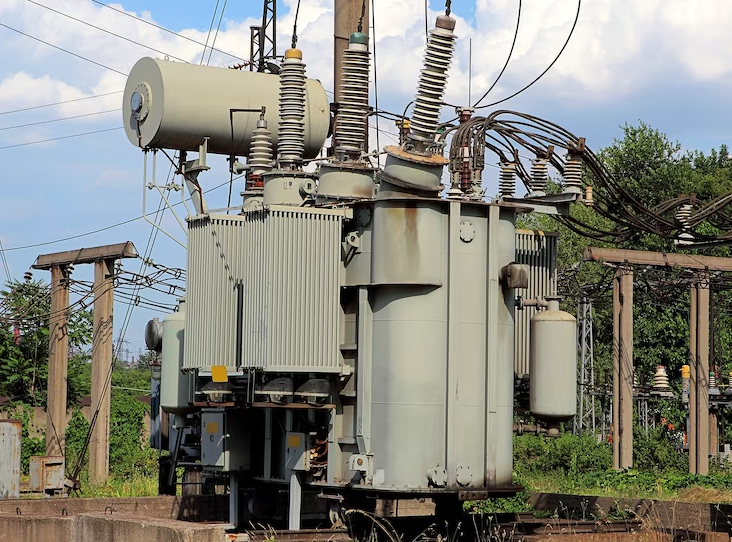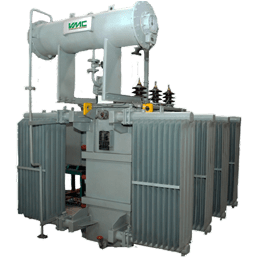Power transformers play a crucial role in electrical systems, ensuring efficient voltage regulation and power distribution. To ensure their reliability and performance, various routine tests are conducted during the manufacturing process and as part of regular maintenance. These tests help identify any defects or abnormalities and ensure that the transformer operates safely and efficiently. In this article, we’ll explore the types of routine test carried out on power transformers.

Table of Contents
ToggleRatio test
Ratio test measure the HV and LV voltage as per specification. Voltage applied on each phase(phase-phase) on HV and induced voltage at LV terminals simultaneously. Measure HV and LV voltage after change every tap position.
Insulation Resistance test
Insulation resistance carried out on winding to check insulation quality. In this test we check insulation resistance between Primary to Earth, Secondary to Earth,Primary to Secondary.
Time resistance method
The test voltage applied for 10 minutes and readings are taken every 15 sec for the first minute and every minute for 10 minutes.
Polarization Index (PI) and DC Absorption factor
PI value shows the void or contamination in the Insulation system
DC absorption factor shows the moisture and dielectric strength of the Insulation system
Dielectric absorption factor polarization index could be calculated as below
Dielectric absorption factor = 60 sec reading / 30 sec reading
Polarization index = 10 min reading / 1 min reading
Magnetizing current test
Excitation/ Magnetizing current test is performed to locate defect in magnetic core structure, shifting of windings, failure in turn to turn insulation or problem in tap changer.
Excitation/ Magnetizing current is the current required to force a given flux through the core. It is the RMS value of the current flowing through a line terminal of a winding when voltage is applied at rated frequency, the other winding being open circuited.
Magnetic core balance test
To check the balance in the magnetic circuit (core balance) in three phase transformers. It verifies core balance.
The voltage should be applied in one phase and measured in the other two phase of the winding. The sharing of the voltage will be maximum in the next phase of the winding (clock wise) more than 60% of the injected voltage and minimum voltage appear in another phase of the winding (clock wise) less than 40% of the injected voltage.
Vector Group Test
Vector group of transformer is essential property for successful parallel operation of transformer. In this Test you have to check the vector group & is the conditions are satisfied.
Winding resistance measurement test
To check for any abnormalities like loose connections, broken strands and high contact resistance in tap changers due to vibrations, fault occurred due to poor design, assembly, handling, poor environment, over loading or poor maintenance and gross difference between the windings and for openness in the connections.
Kelvin bridge technique was adopted in the way of modern digital micro processor method for measuring the winding resistance. Voltage drop is proportional to the winding resistance by injecting the DC current.
Measurement is made to check transformer windings and terminal connections and also both to use as reference for future measurements at reference (e.g. 75ºC) temperature. Measuring the winding resistance is done by using DC current (10 A) and is very much dependent on temperature.
For star connected winding, the resistance shall be measured between the LINE and NEUTRAL terminal.For delta connected windings, measurement of winding resistance shall be done between pairs of line terminals. As in delta connection the resistance of individual winding cannot be measured separately.
Voltage ratio test
According to the IEC 60076-1@IEC:1993+A1:1999, Permissible limit of Turns ratio is ±5% , from tested values turns ratio is present with in tolerance limits.
Short circuit test
This test is used to detect winding movement that usually occurs due to heavy fault current or mechanical damage during transportation or installation since dispatch from the factory. It is expressed as a percentage of the rated voltage of former winding. In this case current flowing through secondary is the full load current and is indicative of copper losses.
Rated full load current to flow through this winding when secondary winding is shorted, is known as impedance voltage.
This test is used to detect winding movement that usually occurs due to heavy fault current or mechanical damage during transportation or installation since dispatch from the factory.
Winding and Bushing Tan delta Measurement
Winding Tan delta measure for determine the deterioration in insulation of the winding and determine damages the dielectric factor in winding.
Bushing tan delta measured for determine the deterioration ininsulation.
For better Tn delta measurement, take testing in clear weather condition. Extreme humid, rainy and cold conditions shall effect the results of the transformer negatively measurement.
Sweep Frequency Response Analysis (SFRA)
A tool to investigate mechanical integrity of transformersWhen after relocation, after an incident, or to get a baseline.
The transformer is considered to be a complex network of RLC components. The contribution to this complex mesh of RLC circuit are from the resistance of the copper winding, inductance of the winding coils and capacitance from the insulation layers between coils, between winding, between winding and core, between core and tank, between tank and winding etc.
Any form of physical damage to the transformer results in the changes of the RLC network. These changes are looking for and employ frequency response to highlight these small changes in the RLC within the transformer.
Other require protection check
Pressure relief value (NO/NC) checks
MOG
Winding temperature indication calibration
Oil temperature indication calibration
Resistance temperature detector checks up to remote end
OLTC motor test
OLTC Scheme verification
Cooling fan verification
Cable healthiness in the control cubicle for the transformer.


Pingback: Procedure for Maintenance and Periodic Inspection of Transformer
Pingback: Electrical Substation: Standard Practice and Maintenance Points
Pingback: Preventive maintenance and Check point of Transformer
Pingback: Transformer Turns Ratio Test (TTR) - Electricalsphere
Helpful document for me. I am as Assistant Engineer/SDO in HVPNL HARYANA. Please send the any other documents helpful for testing process as I am a appointed for inspection of power Power transformer.
Thanks for appreciation.
Already i have posted many post related to testing.
For more electrical Knowledge, Please follow my Insta/Telegram/Whatsapp group.
Now, my focus on spread my website content to more readers.
To boost my moral, Please share my website to your friends.